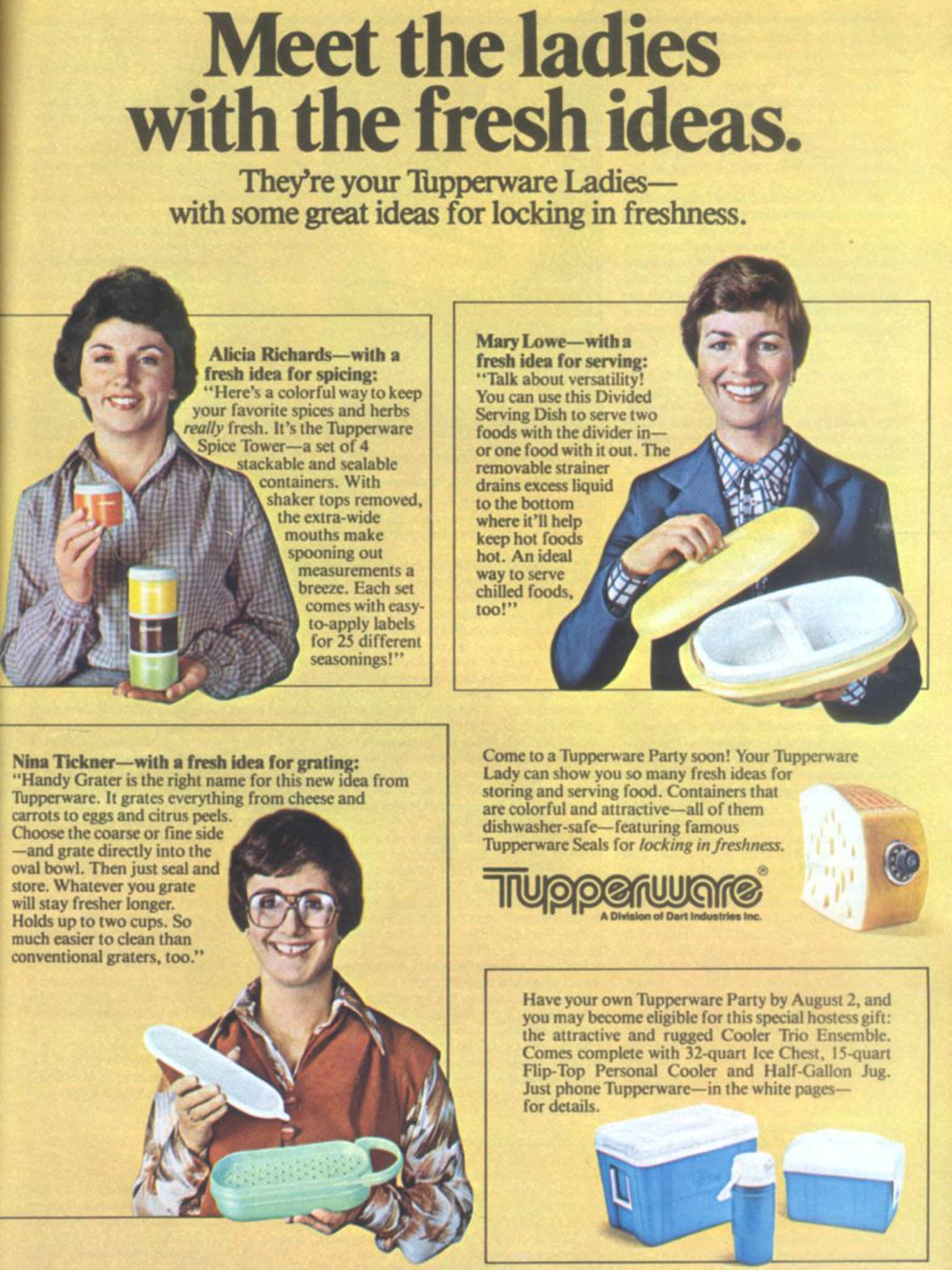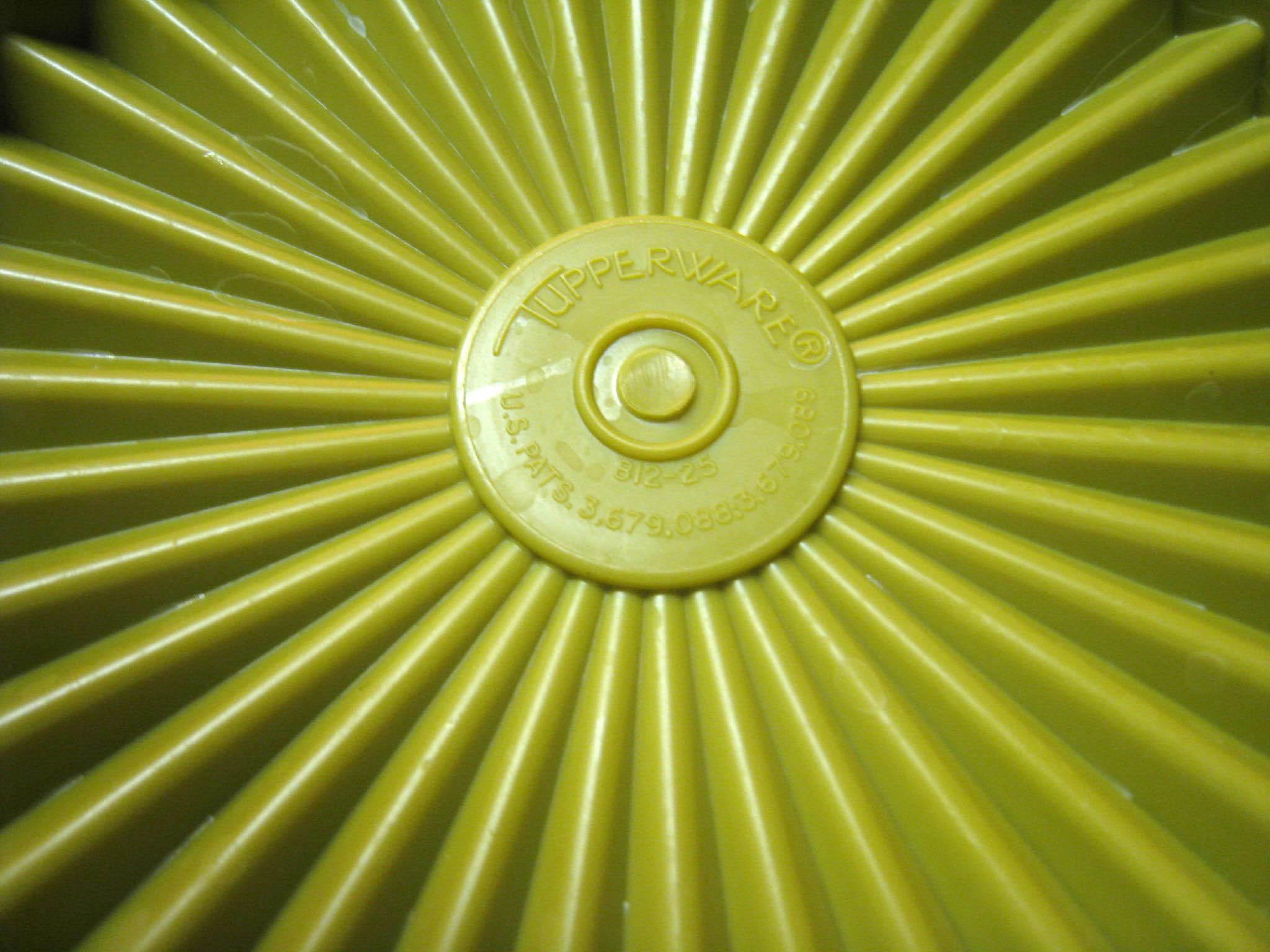Counter culture: How Tupperware sealed its fate
It lifted the lift on a widespread fascination with food containers and became the focal point of parties around the world, both stereotyping and empowering women

Your support helps us to tell the story
From reproductive rights to climate change to Big Tech, The Independent is on the ground when the story is developing. Whether it's investigating the financials of Elon Musk's pro-Trump PAC or producing our latest documentary, 'The A Word', which shines a light on the American women fighting for reproductive rights, we know how important it is to parse out the facts from the messaging.
At such a critical moment in US history, we need reporters on the ground. Your donation allows us to keep sending journalists to speak to both sides of the story.
The Independent is trusted by Americans across the entire political spectrum. And unlike many other quality news outlets, we choose not to lock Americans out of our reporting and analysis with paywalls. We believe quality journalism should be available to everyone, paid for by those who can afford it.
Your support makes all the difference.Eating anywhere outside of your home and restaurants requires transporting food – taking a packed lunch to work, or packaging up leftovers. We love tinfoil, and it has its place, but it’s not quite as sturdy or as trustworthy as a plastic counterpart. So think how revolutionary plastic containers were to easily carry food around with you, keeping it one place, and relatively intact.
When I was at primary school, my packed lunched consisted of sandwiches in one little box – often in those garish colours from the 1970s, browns, yellows and oranges – and other lunchtime snacks in little circular pots – cream bottoms with slightly faded primary coloured tops. Often the sandwich boxes were a little warped, but still sealed properly and kept everything inside. And at home, the chunkier tubs of those same 1970s colours were used to store leftovers from dinner.
I remember thinking “why do we still have these, they’re so old”, and they were. They’re about 30 years old now and still going strong – albeit not used for my lunch.
The Tupperware brand was developed in 1946 by chemist Earl Tupper, from Massachusetts. He designed the first airtight containers to hold and store goods. It was a lightweight and non-breakable plastic – two essential criteria for transporting food.
Setting itself apart from its counter parts was the “burping seal” – named so for the noise it made from pushing the air out. A quite satisfactory sound that confirmed it was closed.
It was the introduction of the Wonderlier bowl – a rounded bottom bowl with a flat circular lid – in 1949 that really propelled the brand forwards as it became a must-have item, and came with a lifetime guarantee too.

But Tupperware didn’t immediately find success, as at first, the products didn’t sell well in shops: people didn’t understand how to use these rather revolutionary new items and needed demonstrations.
What was once its downfall became its saviour, as the birth of the Tupperware party in the 1950s quite literally sealed its popularity. One woman, Brownie Wise, was so successful in her parties, she was became Earl Tupper’s vice president and the official parties – Tupperware Parties Inc – were modelled on hers.

The parties gave hosts an income and even resulted in a wide “Tupperware effect”, providing a number of women a with a career opportunity in the post-war world. The phenomenon became a symbol of American suburban life, and by the 1960s the parties has spread across the UK, as well as the rest of the world, from Argentina to Japan.
But as with anything, what goes up, must come down and in 2003, Tupperware parties ceased in the UK, continuing only in America, as well as shops stopping selling it too.
So unless you’ve got your mum’s much-loved hand-me-downs, you’ll have to look elsewhere for trusty non-leaking pots.
For me, that’s now Sistema. Instead of just a sealing lid, these use chunky clip locks in bold colours and contrasting clear plastic containers. The soup holder has changed my lunches in winter for the better, as well as a little square pot with removable middle shelf that cleverly separates muesli and yogurt without leak. I think they’ll stand the test of time – so perhaps one day my children will wonder why I’m still using something that’s so dated.
Join our commenting forum
Join thought-provoking conversations, follow other Independent readers and see their replies
Comments